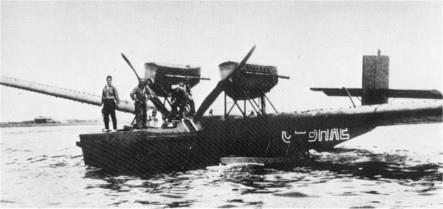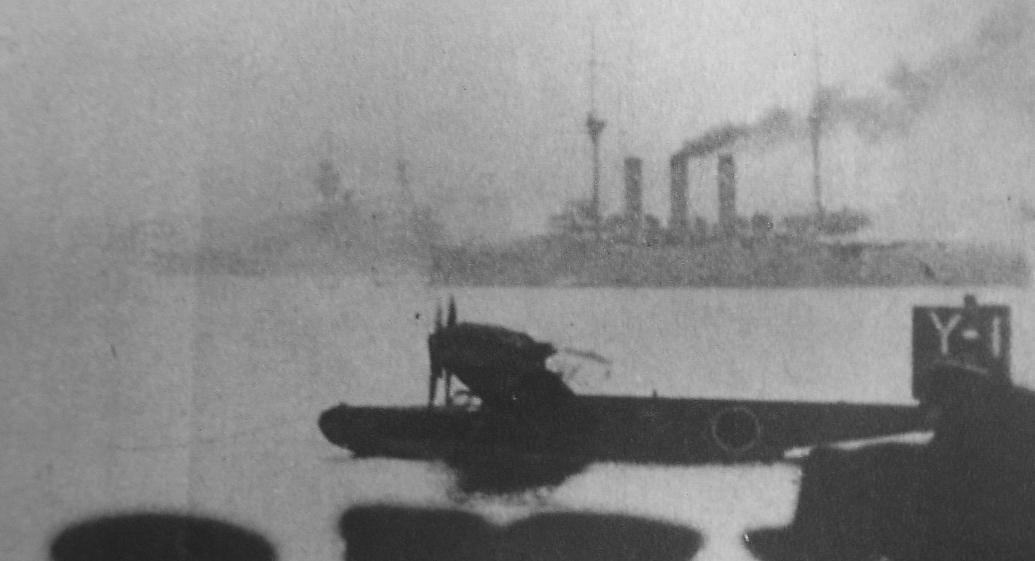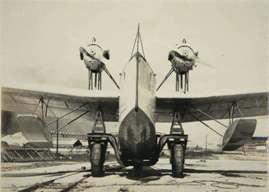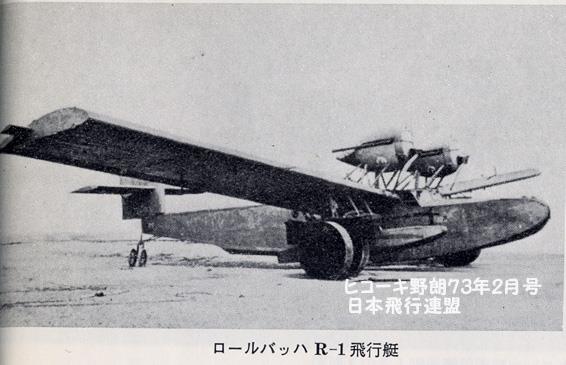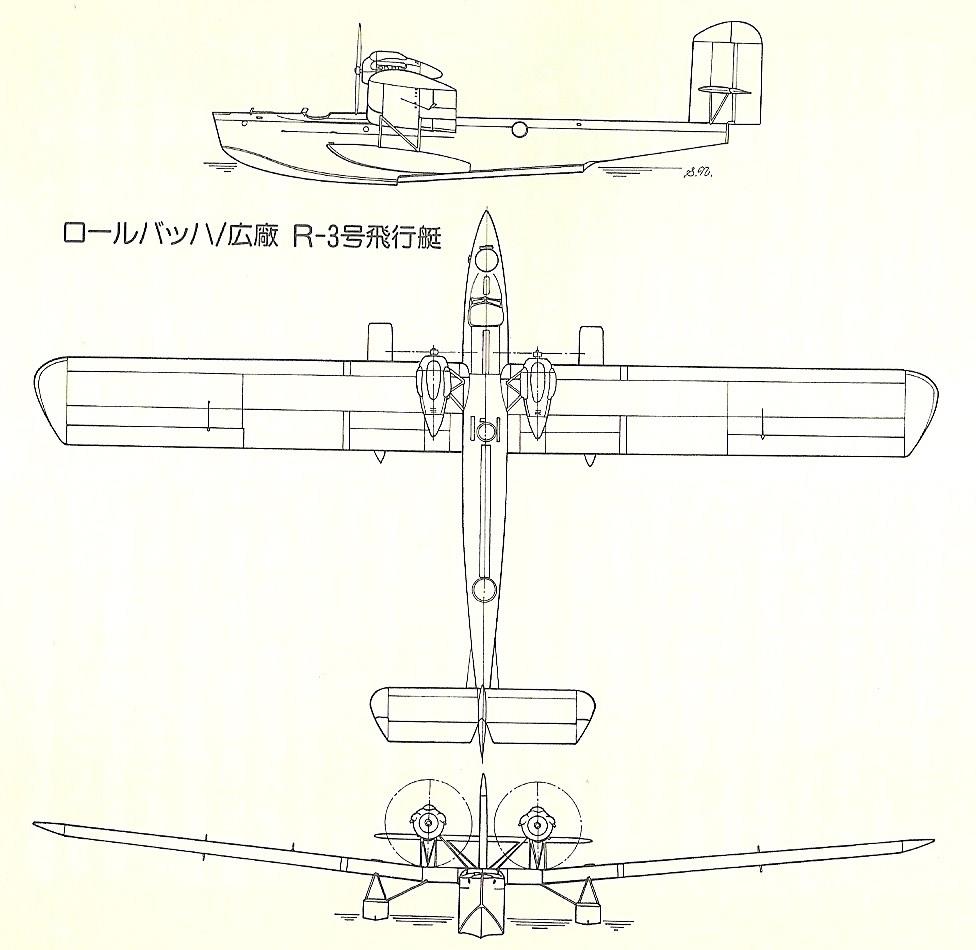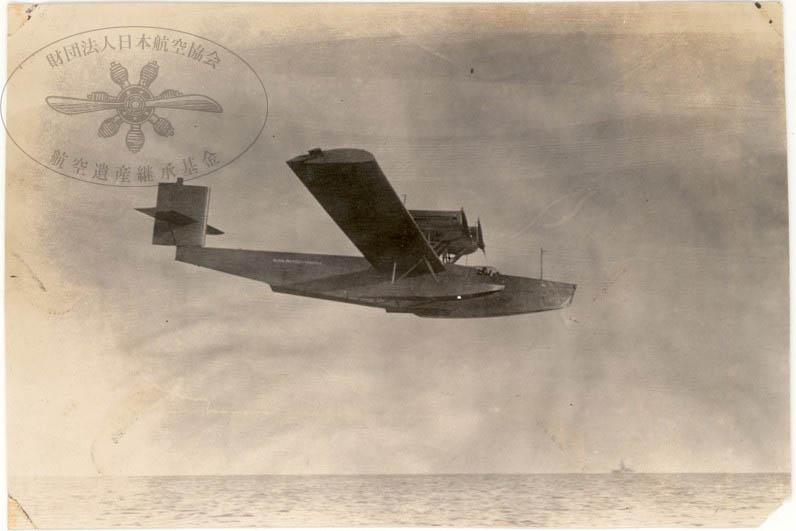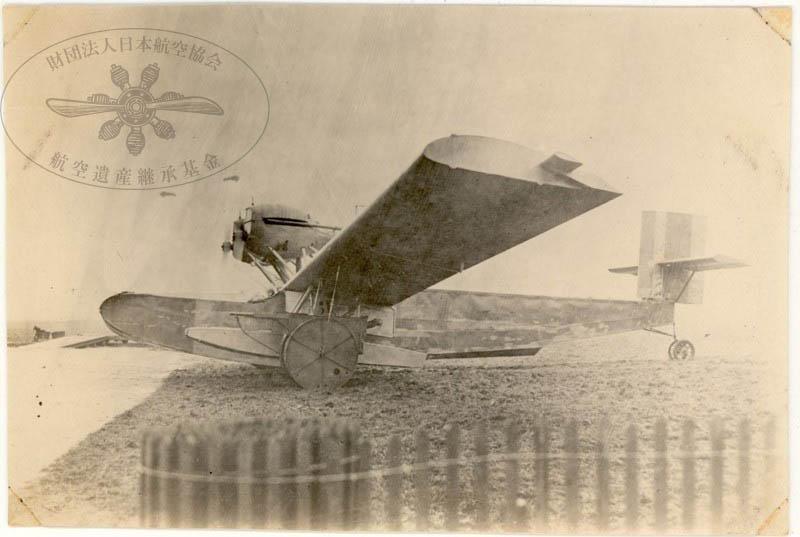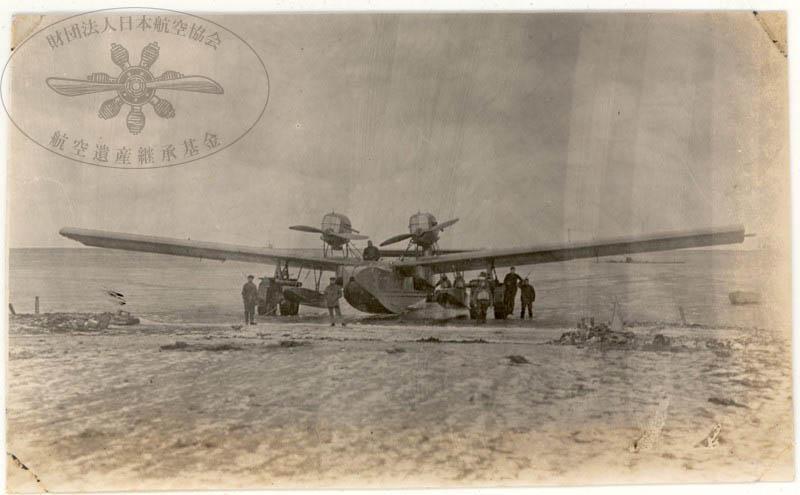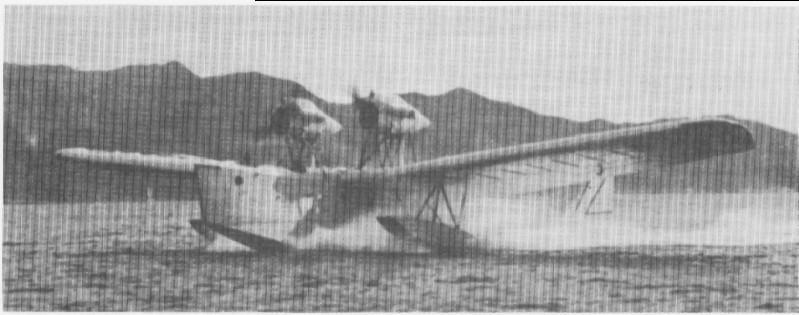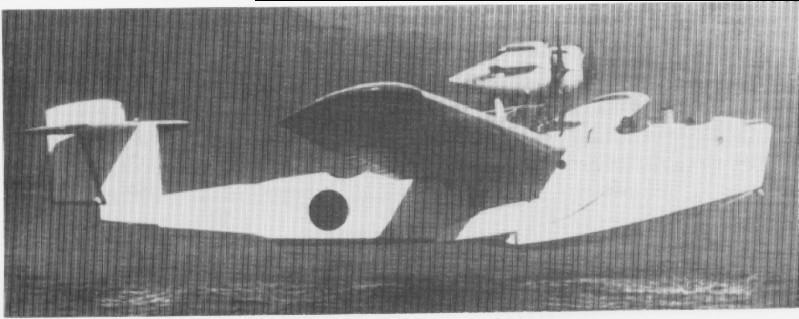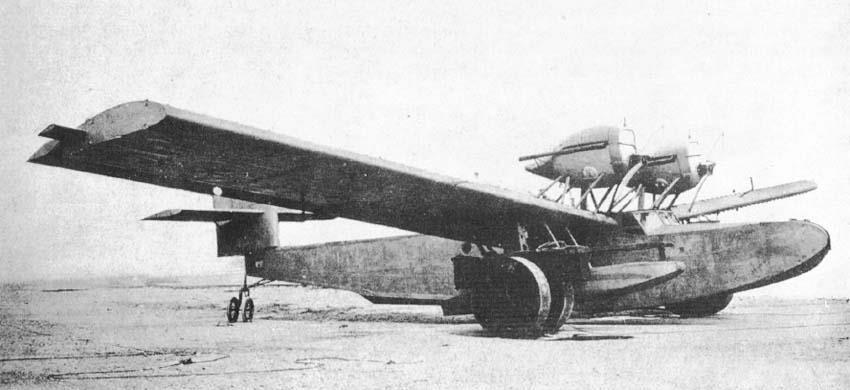Hiro R-3 Experimental Flying-boat
All-metal flying-boat technology and experience having become available in Europe, the Navy decided that both Mitsubishi and the Hiro Naval Arsenal should manufacture aircraft of this type. Thus in the spring of 1923, the Navy sent Lieut Misao Wada and engineer Junichiro Nahagata of the Yokosuka Naval Arsenal to Germany and the Rohrbach company to study the new construction techniques, and Hiro sent Lieut (Ordnance) Jun Okamura to Rohrbach for the same purpose.
By 1925, components for one Rohrbach R 1 flying-boat manufactured in Copenhagen, and powered by two 360 hp Rolls-Royce engines had reached Japan and the President of Rohrbach, and an engineer, Paul Ludwig, went to assist with its assembly which was done at the Yokosuka Naval Arsenal where it was evaluated. Mitsubishi took the opportunity to establish the Mitsubishi-Rohrbach GmbH in Berlin where parts and components of flying-boats were manufactured, apparently to control the market in Japan. Not to be outdone, the Hiro Naval Arsenal built a follow-on aircraft with sufficient changes to avoid infringements. This was called the R-3, differing from the R 1 and R-2 by having 450 hp Hiro-built Lorraine 2 engines mounted on newly configured struts. The squared-off wingtips were changed to rounded configuration, and a wing centre section without dihedral was added. The wings and hull were slightly larger, which accounted for an increase in weight. A change was made in the wing-mounted floats in that they were square-sectioned to improve take-off ability. In all, there was a slight increase in speed, but a reduction in rate of climb because of the greater weight. The most noticeable change was in the slight V-shape of the planing bottom.
Because of its excessive weight, the R-3 was not put into production, but aerodynaically the design had numerous innovations. Its cantilever wing with thick-section aerofoil and Wagner diagonal tension-field structure, high wing loading and high aspect ratio were advancements in the state of the art. Square sections of the hull eased production adding strength but also bringing about skin distortion. The R-3's shortcomings, in addition to weight, were its poor ability to cope with waves of any size and its high power loading. Therefore, it was never accepted as an operational aircraft but, like the Mitsubishi-built R-2 which influenced later designs for that company, so the R-3 influenced later Hiro designs. The contribution to design technology of these Type-R flying-boats was held in high regard by the Japanese aeronautical community.
Manufacturer: Hiro Kaigun Kosho (Hiro Naval Arseanl).
Type: Type: Twin-engined flying-boat.
Crew (6):
Powerplant: Two 450-485 hp Hiro-built Lorraine 2 twleve-cylinder W-type water-cooled engine, driving two-blade wooden propeller.
Armament: One flexible nose-mounted 7.7 mm (0.303 in) machine-gun, one flexible 7.7 mm (0.303 in) machine-gun in open dorsal position.
Dimensions: Span 29.10 m (95 ft (5 3/4 in); length 17.67 m (57 ft 11 3/4 in); height 5.20 m (17 ft 0 3/4 in).
Weights: Empty 4,676 kg (10,308 lb); loaded 6,690 kg (14, 749 lb); power loading 7.43 kg/hp (16.3 lb/hp).
Performance: Maximum speed 100 kt (115 mph); climb to 3,000 m (9,843 ft) in 30 min; endurance 12 hr.
Production: One aircraft built by Hiro Kaigun Kosho in 1927.
Mitsubishi R-2 Type-R Experimental Flying-boat
As already mentioned, Rohrbach in Germany was one of the pioneers of all-metal aircraft design and construction, and because of the Japanese Navy's interest as applicable to large flying-boats, Mitsubishi was asked to study the methods for future use. To do so, Mitsubishi sent engineer Keisuke Ohtsuka to Germany in December 1921, followed by engineer Joji Hattori the following July. Together, the two companies established Mitsubishi-Rohrbach GmbH, in Berlin in June 1925*. Mitsubishi also acquired the services of Rohrbach's Paul Ludwig as manufacturing supervisor.
By this time, the Navy had imported one example of a Rohrbach flying-boat, and it was assembled by the Yokosuka Naval Arsenal as the R-1. Following this, Mitsubishi imported yet another example from Rohrbach in a semi-finished condition and completed its assembly in 1927 as the R-2, and the Hiro Naval Arsenal modified and assembled a third and last example as the R-3. These aircraft became known as the Experimental Type-R Flying-boats, the R standing for Rohrbach. Some of the internal components for these aircraft were manufactured in Japan, as were the two 450 hp Mitsubishi Type Hi engines.
The outstanding feature of this type of flying-boat was its high aspect ratio thick-section wing which had marked dihedral and, for its time , a high wing loading. The two-step hull was of almost square cross section.
Although the structure was very advanced for its time, the design was not fully accepted by the Navy because of poor performance during take-off and alighting. It was unable to cope with waves of any size.
This problem arose through ignoring a known fundamental, that of avoiding a combination of high wing-loading and high power loading.
However, the aircraft provided exceptional experience in the manufacture of all-metal aircraft, especially with the Wagner diagonal tension-field structure, or stressed skin construction. These features were studied closely and developed further at the Hiro Naval Arsenal; contributed to the immediate success for Mitsubishi designs of two 9-Shi aircraft, the Type 96 Atack Aircraft (Nell) and the Type 96 Carrier Fighter (Claude), and spread throughout the Japanese aeronautical industry.

